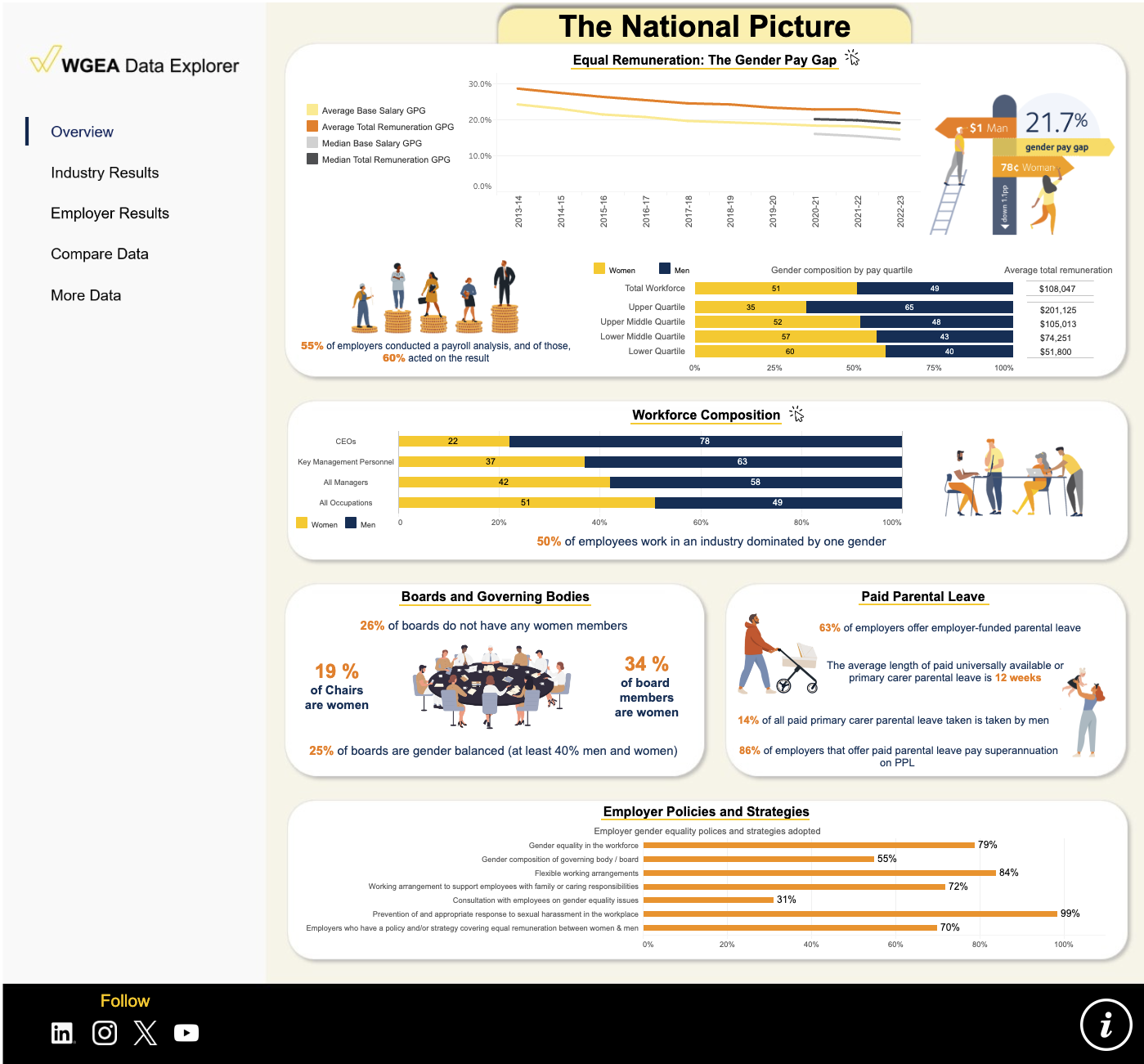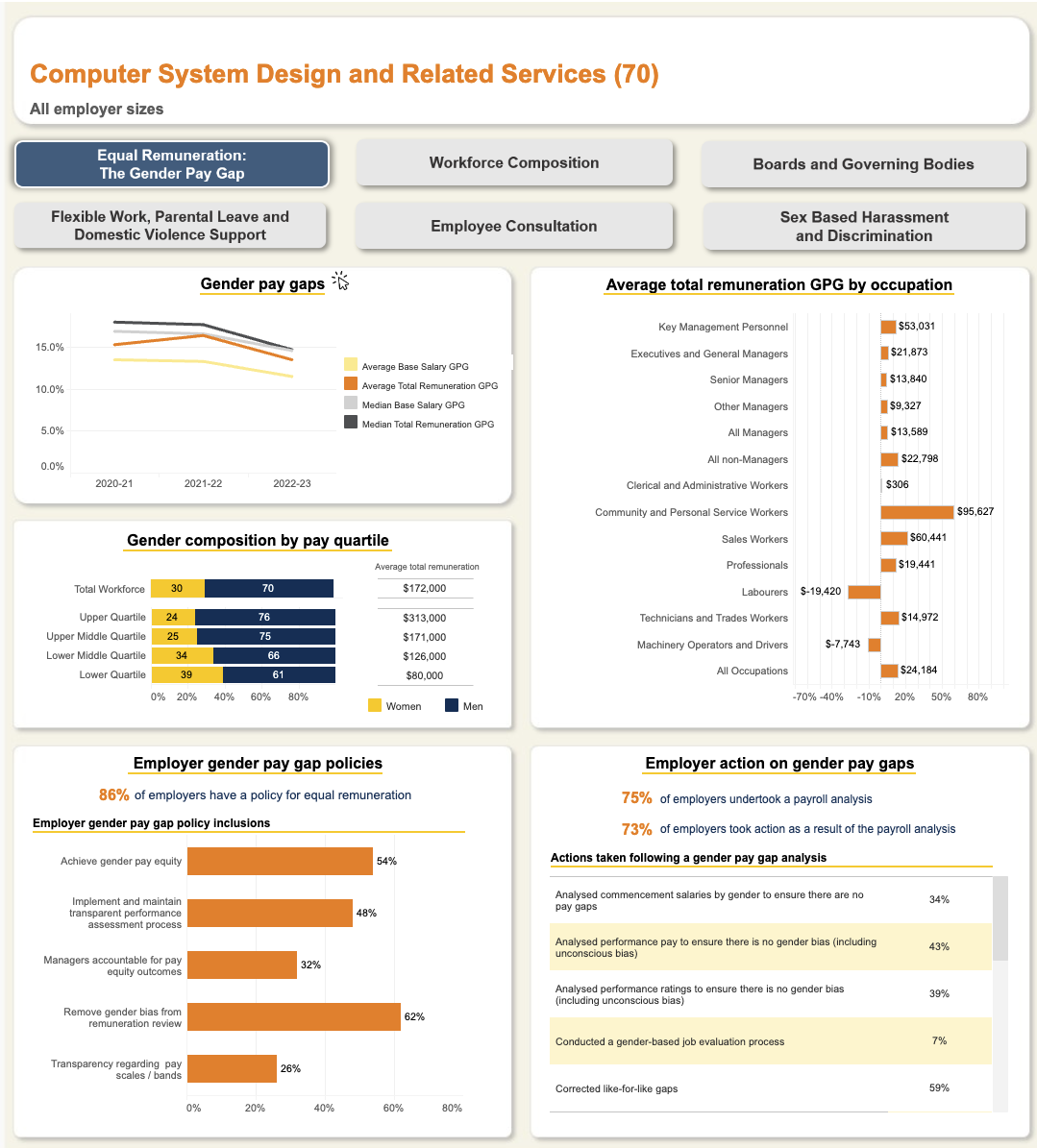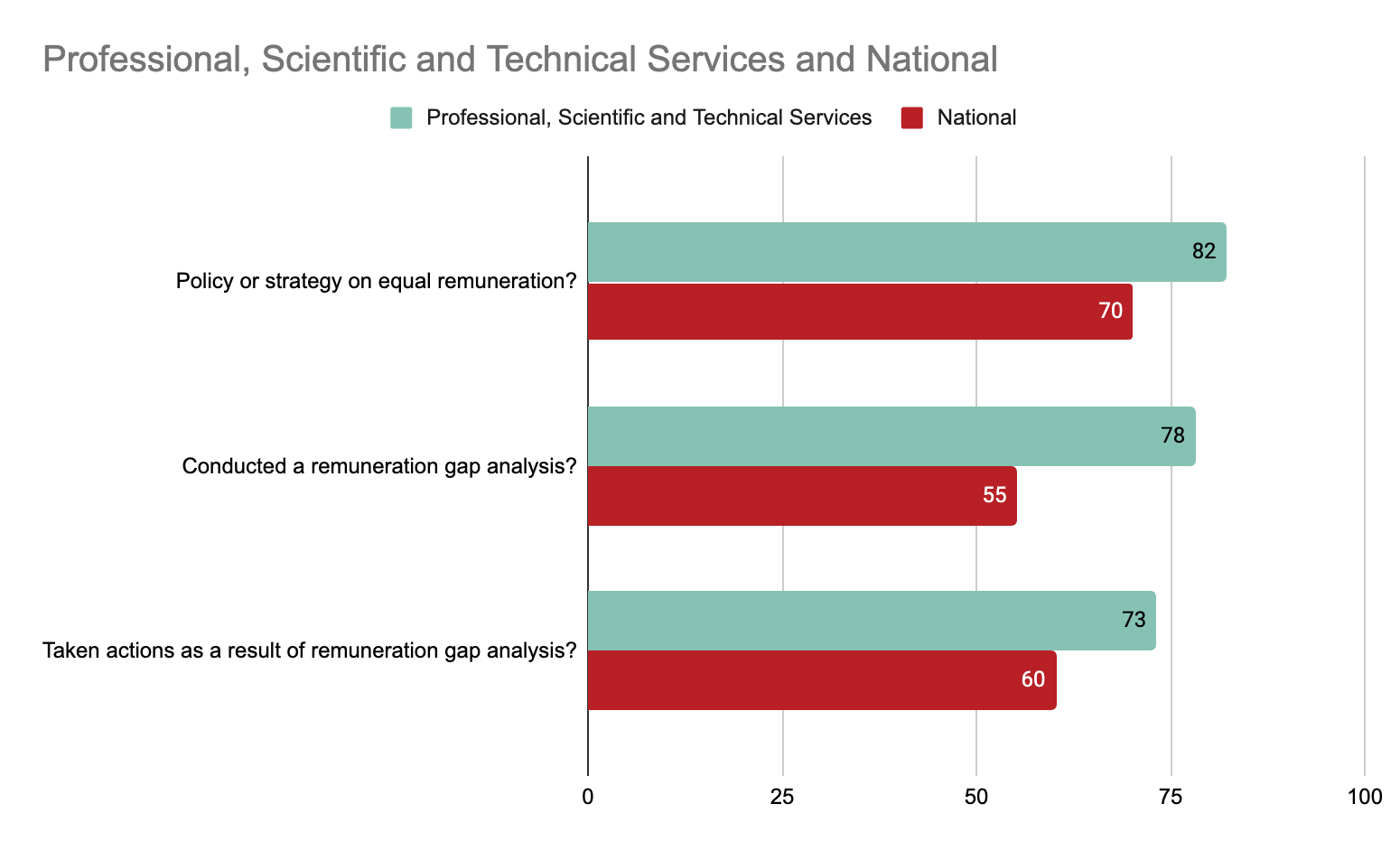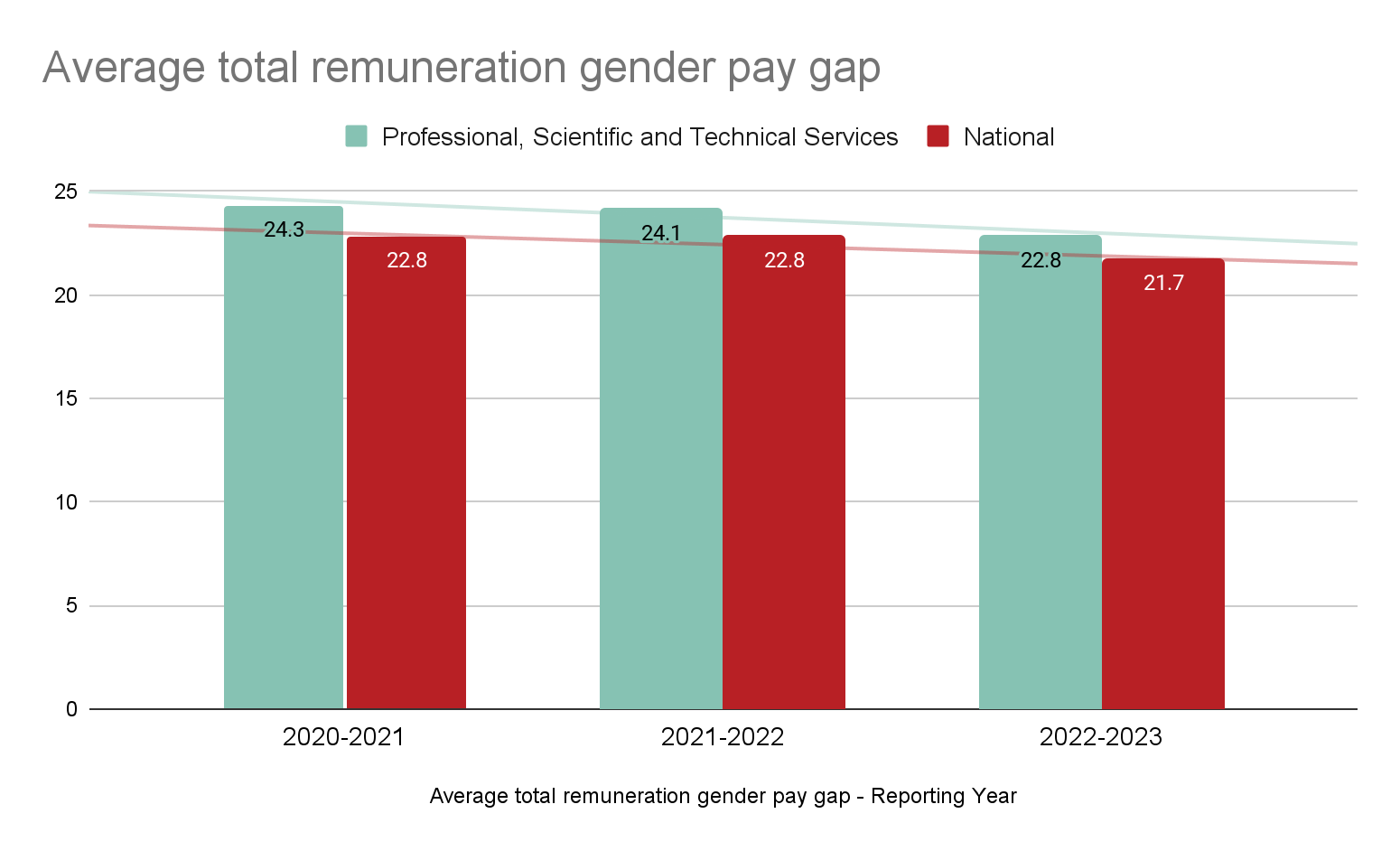Workplace Gender Equality Agency (WGEA)
The Australian Government Workplace Gender Equality is focused on ‘‘Promoting and improving gender equality in the workplace’ in Australia. It was formed by the Workplace Gender Equality Act .
The WGEA Data Explorer
The WGEA Data is an interactive online portal where users can explore gender equality outcomes across industries, industry subdivisions and across groups of employers by size and headcount. The National Picture (see screenshot below) presents highlights of Australia’s Gender Equality at the national level. All the charts have hover elements that reveal additional information and data. The menu items allow users to dive deeper into the underlying data on metrics relating to gender equality in the Australian workforce.
The National Picture

WGEA industry snapshots
In addition to the Data Explorer, The WGEA produces pre-prepared industry based on data. These give summaries of performance across specific industries against key gender equality indicators. Some examples include:
What data is available?
The WGEA Data only allows for drilling into data for three years (2020-21, 2021-22 and 2022-23), although some data in the Overview section is available for comparison back to the 2013-2014 period.
The Overview section provides interesting insights on a single page. For example, you can see at a glance that the national average total remuneration gender pay gap (GPG) was 28.6% in 2013-2014 and has reduced to 21.7% for the 2022-2023 reporting period.
In addition to the gender pay gap itself, there is a wealth of related information, including metrics such as:
- Gender composition by pay quartiles
- Employer gender pay gap policies — what percentage of employers have a policy for equal remuneration
- Employer action on gender pay gaps:
- Percentage of employers that undertook a payroll analysis
- Percentage of employers that took action as a result of the payroll analysis
- Multiple measures relating to flexible work, parental leave and domestic violence support
The screenshot below shows an overview for the computer system design and related services subdivision (within the professional, scientific and technical services industry).
Computer system design and related services subdivision

What is the gender pay gap?
The WGEA points out that ‘the gender pay gap can be hard to understand. And there’s a lot of misinformation on social media’. Here we focus on the data, but some points, definitions and legal issues to consider when thinking about the gender pay gap are:
The gender pay gap is a measure of how we value the contribution of men and women in the workforce, expressed as a percentage or dollar figure representing the difference in earnings between men and women. (See What is the gender pay )
While it has been a legal requirement in Australia that men and women are paid the same for performing the same role or different work of equal or comparable value since 1969, data collected does not support this requirement being consistently met.
Gender pay gaps reflect differences between average or median pay of women and men across organisations, industries and the workforce as a whole.
For more information on understanding the gender pay gap, refer to the WGEA’s page: What is the gender pay
WGEA snapshot — professional, scientific and technical services industry
In this Open Data Insight, we take a closer look at a couple of specific metrics relating to the industry division that most closely matches our own — professional, scientific and technical services. In this industry group, 139 organisations met the reporting eligibility defined by the WGEA.
The average total remuneration pay gap
We can see that the total remuneration gender pay gap in this industry is slightly higher than the national picture for the three reporting years available in the Data Explorer. However, the trend is of a slightly more rapid reduction for this industry compared to the national average. The sample size is very small, but we can see that the gap is decreasing a little more quickly.
The data shows that our industry performs better than the national figures when it comes to having a policy or strategy to achieve equal remuneration and having conducted and taken action as a result of remuneration gap analyses. It will be interesting to see if these factors lead to a faster trend towards lowering the gender pay gap over time.
Professional, Scientific and Technical Services and National

Further reading, data and analysis can be found in this industry snapshot prepared by the WGEA: Professional, Scientific and Technical Services Industry .
If you’re interested to know how Salsa is doing in terms of the gender pay gap, read our article Salsa celebrates International Women’s Day!
More about the WGEA
More information published by the Workplace Gender Equality , including their , the WGEA Reporting and information on reporting requirements and guidelines, can be found on the WGEA .
Visual banner designs were inspired by the WGEA website under a Creative Commons Attribution 4.0 .


